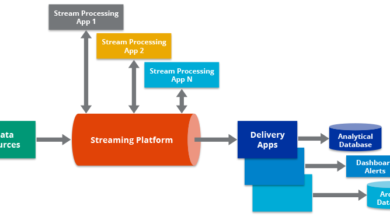Digital reading offers a range of advantages that make it an appealing option for book lovers. The portability, accessibility, adjustable text, interactive features, search functions, cost-effectiveness, and eco-friendliness of eReading contribute to an enhanced reading experience. As technology continues to evolve, embracing eReading can lead to a more convenient, engaging, and sustainable reading journey. So, grab your e-reader or smartphone, explore the vast digital library, and embark on a digital reading adventure today!
What is Digital Reading? Advantages of eReading
In today’s digital age, traditional books are increasingly being replaced by digital reading formats. Digital reading, also known as eReading, refers to the consumption of written content through electronic devices such as e-readers, tablets, or smartphones. As technology continues to advance, e-reading offers numerous advantages over traditional print reading. In this blog, we will explore the top seven advantages of e-reading.
- Portability and Convenience:
One of the significant advantages of eReading is the portability and convenience it provides. With an e-reader or a reading app on your device, you can carry an entire library of books wherever you go. No more heavy backpacks or limited space when traveling. You can access your favorite books anytime, anywhere, with just a few taps.
- Accessibility:
Digital reading breaks down barriers to access. With eReading, you can instantly download books from online platforms, overcoming geographical limitations and availability constraints. This accessibility is particularly beneficial for individuals with physical disabilities or those residing in remote areas with limited bookstores or libraries.
- Adjustable text and font:
E-readers and reading apps offer adjustable text size and font options, making reading more comfortable for individuals with visual impairments or reading difficulties. You can customize the text to suit your preferences, reducing eye strain and enhancing the reading experience.
- Interactive Features:
Digital reading platforms often include interactive features that enhance the reading experience. Features like highlighting, bookmarking, and note-taking allow you to engage actively with the text, making it easier to revisit important passages, take notes, and organize your thoughts.
- Search and Dictionary Functions:
eReading allows you to search for specific words, phrases, or concepts within a book, saving time and effort. Additionally, built-in dictionary functions enable you to look up definitions and understand unfamiliar words instantly, promoting vocabulary development and comprehension.
- Cost-Effective:
Digital books are generally more affordable than their print counterparts. With eReading, you can access a wide range of free or discounted e-books, reducing the overall cost of building your personal library. Moreover, e-books eliminate expenses associated with printing, shipping, and storage, making them a cost-effective option for avid readers.
- Eco-Friendly:
eReading is environmentally friendly. By opting for digital formats, you contribute to the reduction of paper consumption, deforestation, and carbon emissions associated with traditional book production and distribution. Choosing e-books helps conserve natural resources and supports sustainable reading habits.
Why is digital reading important?

While traditional print reading still holds its charm, digital reading brings a host of benefits and opportunities that cannot be ignored. In this blog, we will explore why digital reading is important in today’s world.
- Accessibility and Convenience:
Digital reading provides unparalleled accessibility and convenience. With just a few taps on a device, you can access a vast library of e-books, articles, and other digital content from anywhere in the world. This accessibility is especially beneficial for individuals with physical disabilities or limited access to physical libraries.
- Portability:
With digital reading, you can carry an entire library in your pocket. E-readers, tablets, and smartphones allow you to have multiple books at your fingertips, enabling you to read on the go, whether you’re commuting, traveling, or simply relaxing at home.
- Interactive and engaging:
Digital reading platforms offer interactive features that enhance the reading experience. You can highlight passages, take notes, and bookmark pages, making it easier to revisit and organize information. Additionally, multimedia elements such as videos, audio clips, and hyperlinks can enrich the reading experience and deepen understanding.
- Customization:
Digital reading allows for customization to suit individual preferences. You can adjust font sizes, backgrounds, and color schemes, catering to different reading needs and enhancing readability for individuals with visual impairments or reading difficulties.
- Search and reference:
Digital reading platforms provide powerful search functions, making it effortless to find specific information within a book or across multiple texts. Additionally, integrated dictionaries and reference materials help with instant word definitions and further exploration of concepts.
- Environmental Sustainability:
Digital reading contributes to environmental sustainability. By opting for digital formats, we reduce paper consumption and the associated environmental impacts of traditional book production and distribution. Choosing e-books helps conserve natural resources and supports eco-friendly reading habits.
Conclusion:
Digital reading has become increasingly important in the modern age due to its accessibility, convenience, interactivity, customization options, search capabilities, and environmental sustainability. Embracing digital reading opens up a world of knowledge and information, empowering individuals to explore, learn, and engage with content in ways that were not possible before. In this digital era, let us embrace the advantages of digital reading and continue to cultivate a love for reading in the digital realm.
Digital Reading Strategies to Improve Student Success:
Digital reading strategies are essential for improving student success in today’s technology-driven world. By leveraging digital tools and platforms, educators can enhance reading comprehension, critical thinking skills, and information retention among students. Here are some effective strategies to implement:
- Active Reading Techniques: Encouraging students to actively engage with digital texts fosters deeper understanding and concentration. Annotation tools, highlighting, note-taking, and asking questions while reading help students extract key information and make connections.
- Interactive Multimedia: Digital texts often incorporate multimedia elements like videos, audio clips, and interactive graphics. Encouraging students to interact with these components reinforces comprehension and facilitates connections between text and visuals.
- Collaborative Reading: Digital platforms enable students to collaborate with peers during reading activities. Discussion forums shared annotations, and collaborative projects promote active participation, deeper analysis, and diverse perspectives.
- Digital Reading Guides: Providing students with digital reading guides or templates helps structure their reading process. These guides prompt students to identify key ideas, summarize content, and relate it to real-life examples, improving comprehension and retention.
- Vocabulary Support: Digital reading tools often offer built-in dictionaries and word translation options. Encouraging students to utilize these tools helps them understand and expand their vocabulary.
- Scaffolding and Differentiation: Customizing the complexity of digital texts based on students’ reading levels and providing scaffolding support enhances comprehension. Digital platforms facilitate adjustments such as font size, text-to-speech tools, and audio support for struggling readers.
- Formative Assessment: Digital tools can be used for formative assessments to gauge students’ understanding of the text. Quizzes, polls, and short written responses provide immediate feedback, enabling students to track progress and address misconceptions promptly.
- Digital Reading Journals: Encouraging students to maintain digital reading journals or blogs promotes reflection, summarization of key takeaways, and connections to personal experiences or other texts. This practice enhances critical thinking and metacognitive skills.
- Accessible Reading Materials: Digital platforms offer a vast array of reading materials that cater to students’ interests and cultural backgrounds. Ensuring diverse texts fosters engagement and inclusivity and broadens students’ perspectives.
- Teach Digital Literacy Skills: Beyond comprehension, teaching students digital literacy skills is crucial. Educating them on evaluating online sources, navigating information, and critically analyzing digital texts for credibility and bias equips them with essential skills for the digital age.
By implementing these digital reading strategies, educators can empower students to become active, engaged readers, improving their overall success in comprehending and analyzing digital texts. These strategies promote critical thinking, collaboration, and effective use of digital tools, preparing students for success in the digital
How is digital reading different from traditional reading?

Reading has long been a cherished activity that opens doors to knowledge, imagination, and personal growth. However, with the advent of digital technology, the way we read has undergone a significant transformation. In this blog, we will explore the key differences between digital reading and traditional reading.
- Format:
The most apparent difference lies in the format. Traditional reading involves physical books, newspapers, or magazines, while digital reading utilizes electronic devices such as e-readers, tablets, or smartphones to access digital content.
- Tangibility:
Traditional reading offers a tangible experience where you can feel the paper, flip through the pages, and physically interact with the book. Digital reading, on the other hand, lacks the physicality of a traditional book, providing a more intangible experience.
- Accessibility and Portability:
Digital reading offers unmatched accessibility and portability. With a digital device, you can carry an entire library wherever you go, accessing a wide range of books and content instantly. Traditional reading, while charming, requires physical access to books and may involve limitations in terms of availability and portability.
- Interactivity:
Digital reading platforms incorporate interactive features such as highlighting, note-taking, and multimedia elements like videos and hyperlinks. Traditional reading, while immersive, lacks these interactive elements, providing a more focused and uninterrupted reading experience.
- Customization:
Digital reading allows for the customization of font sizes, backgrounds, and color schemes, catering to individual preferences and enhancing readability. Traditional reading offers a fixed format, limiting customization options.
- Distractions:
Digital reading presents the challenge of potential distractions, such as notifications, internet browsing, or switching between apps. Traditional reading, on the other hand, provides a more immersive and focused environment, free from digital interruptions.
Conclusion:
Digital reading and traditional reading each have their own unique characteristics and advantages. While traditional reading offers a tangible and immersive experience, digital reading provides unmatched accessibility, interactivity, and customization options. Understanding the differences between these two reading methods allows us to appreciate the benefits of both and adapt our reading habits to the evolving digital landscape. Whether you prefer the touch and feel of a traditional book or the convenience and interactive features of digital reading, the joy of reading remains a timeless pursuit that enriches our lives.
Digital reading strategies are techniques and approaches used to optimize the reading experience in a digital environment. These strategies leverage the features and tools offered by digital platforms to enhance comprehension, critical thinking, and engagement. In this blog, we will explore digital reading strategies that can help readers navigate and extract meaningful information from digital texts. By implementing these strategies, readers can improve their comprehension, retention, and overall success in digital reading.
Content:
- Active Reading Techniques
- Interactive Multimedia
- Collaborative Reading
- Digital Reading Guides
- Vocabulary Support
- Scaffolding and Differentiation
- Formative Assessment
- Digital Reading Journals
- Accessible Reading Materials
- Teach Digital Literacy Skills
Digital reading strategies empower readers to navigate the digital landscape effectively. By actively engaging with digital texts, utilizing interactive features, collaborating with peers, and employing various tools and techniques, readers can enhance their comprehension and critical thinking skills. These strategies not only improve the reading experience but also equip readers with the essential digital literacy skills necessary to thrive in the digital age.
The debate between digital reading and book reading often sparks a discussion about personal preferences and the pros and cons of each medium. While both digital reading and book reading offer unique experiences, determining which is the better choice ultimately depends on individual preferences and circumstances.
Digital reading provides unparalleled convenience and accessibility. With a digital device, you can access a vast library of books wherever you are, eliminating the need to carry physical books. Digital platforms also offer features like adjustable text size, search functions, and interactive elements that enhance the reading experience.
On the other hand, book reading provides a tangible and immersive experience. The physical presence of a book, the texture of its pages, and the scent of ink contribute to a sensory experience that some readers find more enjoyable and nostalgic. Additionally, book reading provides a distraction-free environment, free from digital interruptions.
Ultimately, the choice between digital reading and book reading depends on personal preferences, circumstances, and the type of reading experience one seeks. Some readers may prefer the convenience and interactive features of digital reading, while others may find solace and connection in the tangible nature of physical books. Ultimately, both mediums offer their own unique benefits, and the choice boils down to individual preferences and needs.
In today’s world, online reading and traditional reading represent two distinct approaches to consuming written content. Online reading offers the convenience of accessing a vast array of digital resources from anywhere with an internet connection. It provides interactive features, multimedia elements, and search capabilities.
Traditional reading, on the other hand, offers a tangible and immersive experience away from the distractions of digital devices. It allows for a deeper connection with the text and a more focused reading environment. Both approaches have their merits, and the choice depends on personal preferences, accessibility, and the desired reading experience.
Digital reading vs Print reading
Digital reading and print reading offer different experiences and advantages. Digital reading provides convenience through easy access to a vast array of digital content on devices like e-readers, tablets, and smartphones. It enables features such as adjustable font sizes, search functions, and the ability to carry an entire library in a compact device. Additionally, digital reading allows for interactive elements like hyperlinks, multimedia, and annotations, enhancing the reading experience.
On the other hand, print reading offers a tactile experience, with physical books allowing for the sensory pleasure of flipping pages and feeling the weight of the book. It also eliminates distractions from screens and promotes focused reading. Print books can create a stronger emotional connection and are often preferred for aesthetic value and collectability. Both formats have unique merits, and personal preference and context should guide the choice between them.
What is Digital Reading Journal
A digital reading journal is a modern adaptation of the traditional practice of keeping a journal to record thoughts, reflections, and insights about the books we read. It involves using digital tools such as note-taking apps, online platforms, or dedicated reading journal apps to document our reading experiences. Digital reading journals offer several advantages over their paper counterparts. They provide a convenient and easily accessible way to organize and store our thoughts, allowing us to search, tag, and categorize entries for efficient retrieval.
They also enable seamless integration with other digital resources, such as linking to specific passages or adding multimedia elements like images or audio recordings. Additionally, digital reading journals can be easily shared and discussed with others, fostering a sense of community and facilitating collaborative reading experiences.
What is the best app for online reading?
Determining the “best” app for online reading depends on individual preferences and needs. However, there are several popular and highly regarded apps that offer excellent features and functionality. One such app is Kindle, available on multiple platforms. It provides a vast selection of e-books, customizable reading settings, synchronization across devices, and features like highlighting notes and a dictionary lookup.
Another notable app is Apple Books, which offers a user-friendly interface, an extensive library of e-books, and seamless integration with Apple devices. It supports features like highlighting, note-taking, and audiobook integration.
For those who prefer a more open platform, apps like Google Play Books and Kobo offer a wide range of e-books, cross-platform compatibility, and features like customizable reading settings, note-taking, and cloud synchronization.
Ultimately, the best app for online reading depends on factors such as device compatibility, personal reading preferences, access to specific bookstores, and desired features.
Best Digital reading devices








